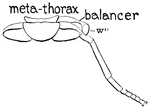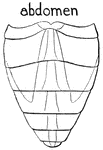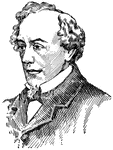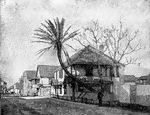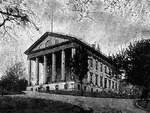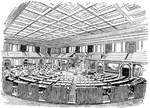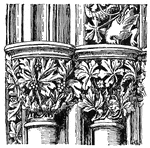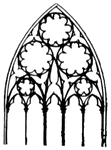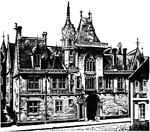
Faneuil Hall
The Faneuil hall was built in 1742 by a Boston merchant named Peter Faneuil. The first floor was used…

Balcony
Balconies of a house in Venice. A balcony is a projection from the face of a wall supported by columns…
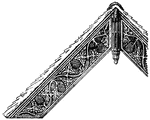
Barge Board
A barge board is nailed against the outer face of a wall, along the slopes of a gable end of a house…

Old Church
"Desperate skirmish at Old Church, near Tunstall's Station, VA., between a squadron of the Fifth United…

Prison
"The humors of a prison- scene in a station-house cell, Washington, D. C., after the appointment of…

First naval battle
"First naval battle in Hampton Roads between the Confederate iron-plated steamers Merrimac, Yorktown,…

Burning of the White House
"Burning of the White House- the Federal troops, by command of General McClellan, abandoning their position…

First Minnesota Regiment
"Fort built around the officer's quarters of the First Minnesota Regiment, Colonel Sully, near Fair…

View of Grafton
"View of Grafton, West Virginia, occupied by the Federal Troops, under the command of General McClellan,…

Bouquet Battery
"The Bouquet Battery, commanding the viaduct over the Patapsco River, on the Baltimore and Ohio Railroad,…

Ellsworth's Zouaves
"The departure of Colonel Ellsworth's Zouaves from New york, escorted by the fire department- the regiment…
Hilton Head
"Expedition to Port Royal- Government buildings erected on Hilton Head, S. C., by the Federal forces…

Tommy Tittlemouse
Little Tommy Tittlemouse lived in a little house. He caught fishes in other men's ditches.

House that Jack Built—Rat
This is the Rat, that ate the malt, that lay in the house that Jack built.
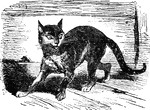
House that Jack Built—Cat
This is the Cat, that killed the Rat, that ate the malt, that lay in the house that Jack built.
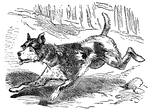
House that Jack Built—Dog
This is the Dog, that worried the Cat, that killed the Rat, that ate the malt, that lay in the house…
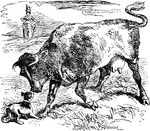
House that Jack Built—Cow
This is the Cow with the crumpled horn, that tossed the Dog, that worried the Cat, that killed the Rat,…
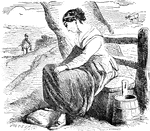
House that Jack Built—Maiden
This is the Maiden all forlorn, that milked the Cow with the crumpled horn, that tossed the Dog, that…

House that Jack Built—Man
This is the Man all tattered and torn, that kissed the Maiden all forlorn, that milked the Cow with…
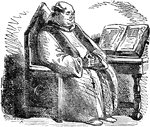
House that Jack Built—Priest
This is the Priest all shaven and shorn, that married the Man all tattered and torn, that kissed the…
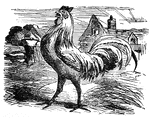
House that Jack Built—Cock
This is the Cock that crowed in the morn, that waked the Priest all shaven and shorn, that married the…
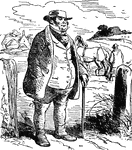
House that Jack Built—Farmer
This is the Farmer that sowed the corn, that kept the Cock that crowed in the morn, that waked the Priest…

Encampment of Colonel Max Weber's Rifle Regiment
"Encampment of Colonel Max Weber's German Turner Rifle Regiment, Twentieth New York Volunteers, at Hampton…
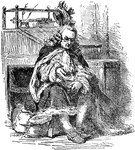
King in the Counting-House
Sing a Song of Sixpence. The king was in his counting-house, counting out his money.

Chinchillas
"It is of a grayish color, and sufficiently long for spinning. The little animal which is produces it…

Battle of Chancellorsville
"Battle of Chancellorsville, Va., Friday, May 1st, 1863. We give a fine sketch of the point where the…

Siege of Vicksburg
"Siege of Vicksburg. Life in the trenches- bivouac of Leggett's Brigade- McPherson's Corps at the White…

Centreville
"View of the town of Centreville, Va., with the battlefield of Bull Run, Bull Run Mountains, Thoroughfare…

Harrison Mansion
"The old Harrison Mansion, Harrison's Landing, Va., the birthplace of President William Henry Harrison,…
Fort Moultrie
"Siege of Charleston, S. C. Bombardment of Fort Moultrie and Batteries Bee and Beauregard by the monitors…

Hooker's Battle
"The war in Tennessee. Hooker's Battle above the clouds, and capture of the Confederate position on…
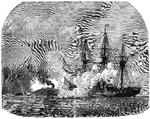
Mobile Harbor
"Farragut's naval victory in Mobile Harbor. The Hartford engaging the Confederate ram Tennessee.…

Siege of Vicksburg
"The siege of Vicksburg. General Grant meeting the Confederate General Pemberton at the Stone House,…

Banks's Expedition
"Banks's Expedition- Executive Officer Parker, of the United States gunboat Essex, hoisting…
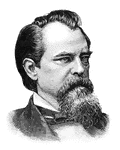
General J. B. Gordon
"General Gordon, born in Upson County, Ga., February 6th, 1832. He was educated at the University of…

Wheat, potted and stunted
A wheat plant grown in a pot, stunted as a result of nitrogen deficiency in the soil.

